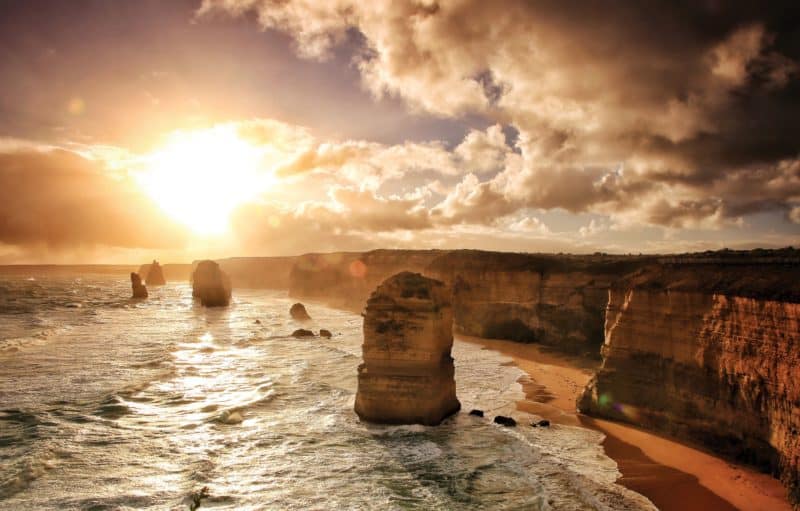PARK WATCH June 2019 |
VNPA’S Shannon Hurley gives an update on the battle to save Westernport Bay against industrial development.
AGL’s proposed ‘Crib Point Gas Import Terminal’ project could spell disaster for Westernport Bay.
The proposal has concerned statewide environment organisations, local groups, Councils and community for some time.
For the past year, as AGL has made its plans widely known to industrialise an internationally protected Ramsar wetland and environmentally significant marine area, the project has proven to be deeply unpopular with the locals across Westernport and the Mornington Peninsula, and sparked concern from VNPA and Environment Victoria.
If it goes ahead, the project would import gas from across the globe or from interstate (potentially to have been exported from Australian in the first place). Up to 40 additional large ships would transport gas into Westernport Bay, translocating it to the 300-metre long industrial sized ship, known as a Floating Storage and Regasification Unit (FSRU). Permanently moored at Crib Point (approximately seven kilometres from Hastings), the FSRU would be easily in view from the shore. The gas would then be converted and connected for gas distribution to a 60-kilometre long pipeline through prime agricultural land to Pakenham.
There are real fears the project will destroy the environmental and aesthetic values of Westernport Bay, including those for recreation, migratory shorebirds, wetlands, mangroves, seagrass beds and saltmarsh, and key fishing grounds for species such as King George Whiting. Not to mention the massive quantities of climate pollution associated with the project.
The Andrews Government cautiously threw their support behind the project, even though it had not gone through a thorough environmental assessment process.
And so a campaign was launched, and after months of pressure on the ground from local and state groups – including community rallies, letters to Ministers, and media coverage – in October 2018 Victoria’s Planning Minister Richard Wynne announced that AGL was required to undertake a full environmental assessment at the state level known as an Environmental Effects Statement (EES). This also requires subsequent sign off at the federal level under the Environment Protection and Biodiversity Conservation Act 1999; however, this is packaged into the state process and not a stand-alone assessment.
In the lead up to this decision, Environment Victoria and VNPA had already taken the initiative to commission an expert marine consultant to review AGL’s preliminary referral studies. These, to their very core, showed significant flaws and gaps in the risks addressed. Four hundred and fifty million litres of chlorine released into the surrounding seawater creating additional toxins in the marine environment, which had not been considered. Nor had the impacts of noise on shorebirds, or bay-wide impacts from fuel spills or explosions, to point out a few other significant omissions.
In December 2018, VNPA put in a submission to define the scoping requirements that outline the matters that need to be addressed by AGL through the EES process, and in January 2019 the final scoping requirements were released.
Currently, AGL is preparing its final EES studies, which are expected to be on public exhibition in the coming months. This could also include opportunities for a public inquiry to further highlight the risks of the project.
Shortly after that, a final assessment is expected by the Planning Minister on if he is satisfied that AGL has adequately addressed the environmental risks of the project, and also by the Federal Environment Minister. Unfortunately, as history has shown, it is rare to see projects such as these knocked back based on an EES.
If AGL gets the green light through the environmental assessment process, they still have other hurdles to jump through, such as getting a works permit from the Environmental Protection Authority (EPA). If AGL’s previous behaviour is anything to go by, we have some work ahead to ensure they don’t attempt to shirk their responsibilities. According to recent media, previously AGL tried to change Victoria’s State Environment Protection Policy (SEPP), which stops the EPA from granting permits for dumping wastewater in high conservation areas – which under AGL’s current project plan is set to occur in Westernport Bay.
Putting the above aside, the justification for the project, including the need for more gas, simply doesn’t stack up. Australia has plenty of gas, and is, in fact, the largest exporter of LNG in the world. So the questions remain around how it is used, rather than the need for supply.
To further highlight the unnecessary nature of this project, AGL is in a race to the top with other energy companies – its Crib Point Project is one of several LNG import terminals proposed to contribute to the southeastern gas market. To AGL’s discredit though, their project is the only one proposed in an internationally significant Ramsar wetland.
In the lead up to the federal election, local Flinders candidates voiced their opposition to the project, including re-elected Greg Hunt, most of who attended a packed community hall event run by Save Westernport and Environment Victoria.
We hope the local and statewide pressure will continue to highlight the risky nature of a plan of this caliber on Westernport Bay, and stop such an unnecessary project in its tracks.
Did you like reading this article? Want to be kept up to date about this and other nature issues in Victoria? Subscribe to our email updates.
You can also receive our print magazine Park Watch four times a year by becoming a member. Find out more here.
